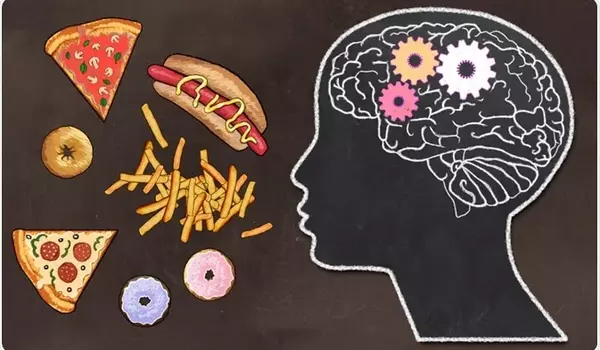Exposure therapy can be a useful treatment for children with eating disorders who are afraid of certain foods. Exposure therapy involves gradually exposing the child to the feared food in a controlled and supportive environment, helping them to overcome their anxiety and develop more positive associations with the food.
Exposure therapy, in which you confront your fear in a safe environment, is one of the most effective interventions for this type of anxiety disorder, whether you’re afraid of dogs, needles, or enclosed spaces. According to a new study led by Penn State College of Medicine researchers, exposure therapy is also a promising treatment for adolescents with eating disorders. They discovered that exposing children to feared foods, such as candy bars and pizza, helped them experience less anxiety about food while in a partial hospitalization program for eating disorders.
“As a society that is so heavily influenced by diet culture, our relationships with our bodies can be dysfunctional,” Jamal Essayli, assistant professor of pediatrics and psychiatry and behavioral health, said. “When I was in high school, I came out as gay, and by the time I got to college, I noticed an increased emphasis on body image among gay men.” That’s partly what sparked my interest in researching and working with eating disorder patients.”
According to the National Eating Disorders Association, approximately 30 million Americans will struggle with eating disorders such as anorexia nervosa, bulimia nervosa, binge-eating disorder, and others at some point in their lives. Aside from the LGBTQ+ community, adolescents and young adults are especially vulnerable, and the COVID-19 pandemic hasn’t helped. Recent research by co-author Jennifer Shook, assistant professor of pediatrics at Penn State College of Medicine, and colleagues found a significant increase in eating disorder-related inpatient and outpatient visits to emergency departments among adolescents and young adults during the pandemic.
Our findings provide support for integrating food exposure into partial hospitalization programs for adolescents with eating disorders who are undergoing weight restoration. And while more research is needed, our results may begin to help clinicians determine how much emphasis to place on within-session habituation and between-session habituation.
Jamal Essayli
“While this is an active area of research, the causes of eating disorders are typically thought to be a combination of biological predisposition and environment,” said Essayli. “For example, having an anxious or perfectionistic predisposition and being teased about your body size or weight can both increase a person’s risk for developing an eating disorder.”
Essayli and his colleagues recruited 54 adolescents with a median age of 14 years who were participating in a partial hospitalization program for eating disorders for the current study, which was published in the International Journal of Eating Disorders. The program was held five days a week for an average of eight weeks per person. The clinical team exposed the patients to a feared food every day. On Mondays, for example, participants received a full-sized candy bar, a baked good such as a cookie on Tuesdays, pizza on Wednesdays, a dessert on Thursdays, and pancakes on Fridays.

Exposure therapy to feared foods may help kids with eating disorders
“Many of these patients were underweight or weight suppressed, and had intense anxiety about these foods,” said Essayli. “It was important for them to learn that there’s nothing horrible about having pizza and ice cream at a party, for example, that it’s actually part of a fulfilling life.”
Patients rated their distress on a scale of 0 (no distress) to 10 (extremely high distress) immediately before and after each food exposure. In addition, patients were given the Children’s Eating Attitudes Test and the Fear of Food Measure on a regular basis to assess levels of anxiety about eating and food avoidance behaviors. Finally, in weekly therapy sessions, the adolescents were encouraged to discuss their feelings about the exposure challenges.
“One of the things we wanted to test was whether within-session and between-session habituation were important for weight gain,” Essayli explained. “Say you’re scared of dogs. Within-session habituation occurs when your anxiety decreases while you’re with the dog while you’re doing exposure therapy. Between-session habituation occurs when your anxiety decreases from session to session over the course of a day.”
This distinction is significant, according to Essayli, because it was previously unknown how much emphasis clinicians should place on fear-reduction during exposure therapy sessions for eating disorders.
Overall, the researchers discovered that SUDS decreased significantly over time prior to exposure to feared foods, indicating that between-session habituation occurred. The difference between pre- and post-exposure SUDS, on the other hand, did not decrease over time, indicating that within-session habituation did not occur. As a result, the researchers concluded that between-session habituation predicted favorable treatment outcomes, such as weight gain and improvements on the Children’s Eating Attitudes Test and Fear of Food Measure.
“Our findings provide support for integrating food exposure into partial hospitalization programs for adolescents with eating disorders who are undergoing weight restoration,” said Essayli. “And while more research is needed, our results may begin to help clinicians determine how much emphasis to place on within-session habituation and between-session habituation.”





